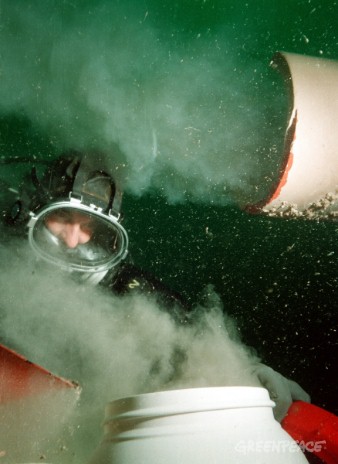
– TEPCO unveils plan to process contaminated water (NHK):
Tokyo Electric Power Company has unveiled details of its plan to process radioactive wastewater at its damaged Fukushima Daiichi nuclear power plant.
The wastewater has been hampering efforts to restore the reactors’ cooling systems.
Tokyo Electric announced on Wednesday it would start building early next month, together with US and French firms, a storage and processing facility for nearly 70,000 tons of highly radioactive water. The utility firm aims to begin operating the system in June of this year.
The contaminated water is believed to be pooled inside turbine buildings and utility tunnels at the plant’s 1, 2 and 3 reactors.
Tokyo Electric had earlier said it aims to set up by July of this year a system to remove radioactive substances from the water and reuse it to cool the reactors.
Contaminated water will be put through an oil filter, and the density of radioactive material would be lowered using a mineral called zeolite.
Salt would then be removed from the water so that it could be used to cool the reactors again.
Radioactive waste from this process would be stored inside the nuclear complex, but the utility has yet to consider methods for its final disposal.
Wednesday, April 27, 2011 19:02 +0900 (JST)

A diver sampling the cleaned water from the Areva nuclear processing plant outflow in the English Channel. Photo courtesy of Greenpeace / Gavin Newman
– French System For Cleaning Fukushima Water Blamed For Leukemia, Polluted Beaches In Europe (Forbes):
The process a French firm will use to clean Fukushima’s radioactive water has been blamed for a leukemia cluster in France and for polluted beaches and irradiated waters from the English Channel to the Arctic Sea.
Areva SA has promised to remove up to 99.99 percent of the radioactive contaminants in 67,500 tons of water flooding the crippled Fukushima-Dai-ichi nuclear plant. It will use a co-precipitation method employed at its La Hague nuclear fuel reprocessing facility in Normandy.
That process has been documented in detail by a French nuclear expert and by the U.S. government, which has shunned France’s fuel reprocessing method because of “a nonproliferation concern and environmental concerns,” in the words of Nuclear Regulatory Commission Chairman Gregory Jaczko.
The water treatment process has been deplored by environmental groups including Greenpeace and Physicians for Social Responsibility in part because of the quality of cleaned water it produces:
France reprocesses reactor fuel at the vast La Hague facility on the Normandy coast. The so-called low-level liquid wastes from reprocessing are discharged into the English Channel and into the air. However, these “low-level” wastes still contain highly radioactive and often long-lived isotopes. Dumping these same wastes into the sea in containers would violate the 1970 London Dumping Convention.”
via Physicians for Social Responsibility (pdf)
Areva treats contaminated water from reactor cooling systems by injecting chemicals that bind to radioactive isotopes and settle out.
Areva has not revealed which chemicals it will use at Fukushima, but a 1995 report commissioned by the U.S. Department of Energy (pdf) details the process it uses at La Hague. According to DOE, Areva uses:
- nickel and potassium ferrocyanide to capture cesium
- barium sulfate to capture strontium
- cobalt sulfide for ruthenium
- titanium sulfate for antimony and other emitters of alpha radiation
Areva also uses hydroxides of sodium, manganese, titanium, and iron, according to other sources. The chemicals and radionuclides are removed from the water in a highly radioactive chemical sludge.
Read moreTEPCO To Use French System Blamed For Leukemia And Polluted Beaches In Europe To ‘Clean’ Deadly Radioactive Water

